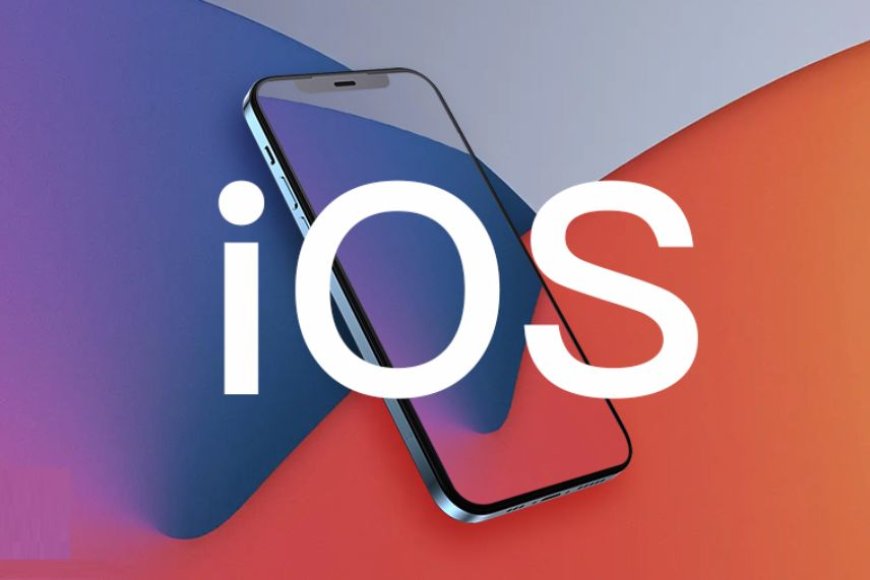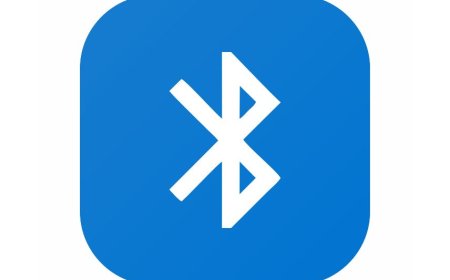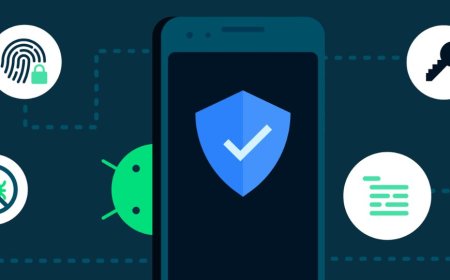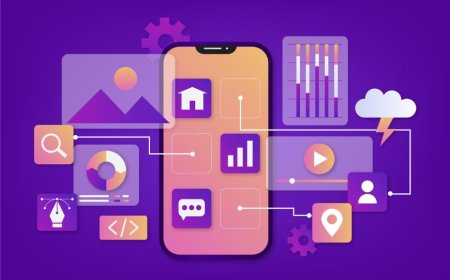The Evolution of iOS: A Comprehensive History
Embark on a journey through the evolution of iOS with Tectoks. Unveil the comprehensive history of Apple's game-changing operating system in a single glance.

Table of Contents:
-
Introduction
-
The Genesis of iOS: Historical Overview
-
Revolutionizing Tech: iOS Development History
-
The iOS Revolution: Impact on Society
-
Navigating the iOS Version Timeline
-
Understanding iOS Updates: Overview and Impact
-
Conclusion
1. Introduction
Mobile operating systems are software platforms that power smartphones, tablets, and other smart devices. They are responsible for the way users interact with their devices, the functionality and performance of the applications and services, and the security and privacy of the data and information. Mobile operating systems have evolved significantly over the years, from the simple and limited systems of the early devices to the complex and sophisticated systems of modern ones.
One of the most influential and popular mobile operating systems is iOS, which was first launched by Apple in 2007, along with the first-generation iPhone. iOS has gone through many major upgrades and changes since then, adding new features and redefining what is possible on mobile devices. In this essay, we will explore the history and evolution of iOS, its impact on the mobile industry and society, and its future prospects and innovations. We will also compare and contrast iOS with other mobile operating systems, such as Android and BlackBerry OS, and analyze their advantages and disadvantages.
2. The Genesis of iOS Historical Overview
Pre-iOS Era: Apple's Prelude to Mobile Dominance
Before the advent of iOS, Apple had already established itself as a pioneering force in the realm of personal computing. The company's innovative products, such as the Apple Macintosh, had garnered a dedicated user base. However, Apple's foray into the mobile domain has yet to materialize.
The groundwork for Apple's dominance in the mobile space was laid with the introduction of the iPod in 2001. This portable music player revolutionized the way people consumed music, laying the foundation for Apple's understanding of consumer electronics and user experience in the mobile realm.
Apple continued to innovate and expand its product lineup, paving the way for the eventual development of a mobile operating system. The acquisition of a company called FingerWorks in 2005, known for its multitouch technology, was a significant step toward the development of intuitive touch-based interfaces that would later define iOS.
Birth of iOS: Steve Jobs' Vision Unveiled
The pivotal moment in Apple's mobile journey came with the unveiling of the original iPhone by Steve Jobs in 2007. This groundbreaking device was accompanied by the debut of iOS, the operating system specifically designed to power the iPhone.
Steve Jobs, known for his visionary approach, presented iOS as a revolutionary platform that would redefine the smartphone experience. iOS was characterized by its touch-centric interface, simplicity, and seamless integration between hardware and software, setting it apart from existing mobile operating systems.
Key features introduced with iOS included the iconic slide-to-unlock gesture, the visual voicemail system, and the Safari web browser optimized for mobile use. The App Store introduced a year later in 2008, was a game-changer, allowing third-party developers to create and distribute applications for iOS devices, further enhancing the platform's capabilities and appeal.
Steve Jobs' unveiling of iOS and the iPhone marked a watershed moment in the tech industry. His vision not only transformed Apple into a dominant player in the mobile market but also set new standards for user experience, interface design, and technological innovation in the years to come.
In summary, the genesis of iOS can be traced back to Apple's gradual progression in consumer electronics, culminating in the visionary unveiling of the iPhone and the purpose-built iOS operating system. This launch not only revolutionized Apple's trajectory but also reshaped the entire landscape of mobile technology.
3. Revolutionizing Tech: iOS Development History
Here is a summary of the iOS development history, based on the web search results:
-
iOS 1: The Foundation of a Mobile Empire iOS 1 was the first version of the operating system that powered the iPhone, which was launched in June 2007. It was originally called iPhone OS and did not have an official name until 2010. iOS 1 introduced features such as multi-touch gestures, visual voicemail, Safari web browser, and the home screen with icons It also supported third-party web apps, but not native apps.
-
iOS 2-4: Expanding Functionality and App Store Launch iOS 2 was released in July 2008 and added support for native apps through the App Store, which was a revolutionary platform for developers and users iOS 2 also introduced features such as push notifications, Google Maps, and Exchange ActiveSync iOS 3 was released in June 2009 and added features such as copy and paste, MMS, Spotlight search, and voice control iOS 4 was released in June 2010 and renamed the operating system to iOS, following the release of the iPad iOS 4 also introduced features such as multitasking, folders, FaceTime, and iBooks.
-
iOS 5-7: Features, Design, and Global Adoption iOS 5 was released in October 2011 and added features such as iCloud, iMessage, Notification Center, and Siri iOS 5 also supported the first generation of the iPad and iPod Touch. iOS 6 was released in September 2012 and added features such as Apple Maps, Passbook, and Facebook integration iOS 6 also supported the iPhone 5, which had a larger screen and a new design. iOS 7 was released in September 2013 and introduced a major redesign of the user interface, with a flat and colorful aesthetic iOS 7 also added features such as Control Center, AirDrop, and iTunes Radio.
-
iOS 8–10: Advancements in Accessibility and Security iOS 8 was released in September 2014 and added features such as Continuity, Health, and Apple Pay iOS 8 also introduced Swift, a new programming language for development. iOS 9 was released in September 2015 and added features such as Proactive Assistant, News, and Split View iOS 9 also improved the performance and battery life of the devices iOS 10 was released in September 2016 and added features such as iMessage apps, SiriKit, and Home iOS 10 also enhanced the security and privacy of the users by requiring encryption and Touch ID for unlocking the devices
-
iOS 11–12: Shaping the Future of Mobile Experience iOS 11 was released in September 2017 and added features such as ARKit, Animoji, and Files iOS 11 also introduced a separate operating system for the iPad, called iPadOS, which offered more features and customization for the tablet iOS 12 was released in September 2018 and added features such as Screen Time, memos, and Shortcuts iOS 12 also improved the performance and stability of the devices.
-
iOS 13 was released in September 2019 and added features such as Dark Mode, Sign in with Apple, and CarPlay. iOS 13 also enhanced the camera and photo editing capabilities of the devices.
-
iOS 14 was released in September 2020 and added features such as Widgets, a Library, and App Clips iOS 14 also improved the user experience and privacy of devices by allowing more customization and control over the home screen and app permissions
-
iOS 15 was released in September 2021 and added features such as SharePlay, Focus, and Live Text iOS 15 improved the communication and productivity of the devices by enhancing the FaceTime, Messages, and Safari apps
-
iOS 16 was released in September 2022 and added features such as NameDrop, Journal, and StandBy iOS 16 improved the accessibility and security of the devices by supporting more features for Apple Wallet and Spatial Audio
-
iOS 17 was released in September 2023 and added features such as Siri, Phone, and AirDrop iOS 17 also improved the intelligence and innovation of the devices by enabling more features for machine learning and augmented reality.
4. The iOS Revolution: Impact on Society
iOS is the operating system that powers the iPhone, iPad, iPod Touch, Apple Watch, and Apple TV. It is one of the most popular and influential platforms in the world, with over 2 billion active devices as of 2020. iOS has revolutionized the fields of communication, entertainment, education, health, business, and more by providing users with a seamless, intuitive, and secure experience. iOS has also changed the way people interact with each other, with themselves, and with their environment, creating new opportunities and challenges for society.
iOS in Everyday Life: Changing User Behavior
-
Communication and Social Interaction: iOS devices, with their messaging apps, social media platforms, and seamless connectivity, have revolutionized how people communicate. They've made it easier to stay in touch, share moments instantly, and connect globally, changing the dynamics of personal relationships and social interactions.
-
Information Access: The accessibility of information through iOS devices has reshaped how individuals seek and consume information. With the internet at their fingertips, users can quickly find answers, learn new skills, and stay updated on current events, altering learning and knowledge acquisition behaviors.
-
Entertainment and Lifestyle: iOS devices have become entertainment hubs, offering access to a vast array of games, music, movies, and streaming services. They've changed how people entertain themselves, consuming media on the go and customizing experiences according to personal preferences.
-
Productivity and Convenience: iOS's suite of productivity apps and tools has streamlined daily tasks, from managing schedules and emails to handling finances and organizing personal and professional lives. The convenience of mobile productivity has led to increased efficiency and flexibility in work and personal routines.
iOS in Business: Transforming Industries
-
Enterprise Mobility: iOS devices have permeated the business world, enabling mobility and flexibility. They've become essential tools for businesses, facilitating remote work, enabling sales teams, and enhancing communication within organizations.
-
App Economy and Innovation: The App Store ecosystem created by iOS has given rise to an entire app economy, where developers and businesses create innovative solutions to cater to diverse needs. This marketplace has transformed industries, from healthcare and education to finance and retail, offering new ways of service delivery and customer engagement.
-
Enhanced Customer Engagement: Businesses leverage iOS devices to engage customers through apps, offering personalized experiences, customer service, and convenient shopping. This has reshaped marketing strategies and customer interactions, fostering loyalty and enhancing user experiences.
-
Data and Analytics: iOS devices have also played a role in data collection and analytics for businesses. Through apps, businesses gather valuable insights into user behavior, preferences, and trends, allowing them to make informed decisions and tailor their offerings accordingly.
In essence, the integration of iOS devices into everyday life has fundamentally altered user behavior, enhancing connectivity, efficiency, and convenience. Simultaneously, in the business realm, iOS has reshaped industries, fostering innovation, improving customer engagement, and redefining how companies operate and deliver services.
5. Navigating the iOS Version Timeline: A Walk Through iOS Versions
iOS is the operating system that powers the iPhone, iPad, iPod Touch, and other Apple devices. It is one of the most popular and influential platforms in the world, with over 2 billion active devices as of 2020. iOS has evolved and improved over the years, with new features and updates being released every year, usually in September or October. iOS has also changed its name and branding several times, reflecting its status and scope as a platform. The following is a brief overview of the iOS version timeline, from its inception in 2007 to its latest release in 2023.
iOS Version Timeline:
-
iOS 1: Introduced in 2007, iOS 1 laid the foundation for mobile dominance, bringing a touch-centric interface, a Safari browser, and visual voicemail.
-
iOS 2-4: These versions expanded functionality. iOS 2 (2008) introduced the App Store, while iOS 3 (2009) and iOS 4 (2010) brought features like copy-paste, multitasking, and FaceTime.
-
iOS 5-7: iOS 5 (2011) introduced iCloud, Siri, and Notification Center. iOS 6 (2012) focused on a revamped design and Apple Maps. iOS 7 (2013) brought a significant visual overhaul and a Control Center.
-
iOS 8–10: iOS 8 (2014) emphasized accessibility with HealthKit and HomeKit, while iOS 9 (2015) introduced multitasking for iPads. iOS 10 (2016) brought improvements in Siri and security with Touch ID.
-
iOS 11–14: iOS 11 (2017) showcased a redesigned Control Center and augmented reality capabilities. iOS 12 (2018) focused on performance improvements and introduced Screen Time. iOS 13 (2019) emphasized privacy measures and introduced Dark Mode. iOS 14 (2020) refined privacy and introduced widgets.
-
iOS 15 and Beyond iOS 15 (2021) emphasized communication with Focus mode and SharePlay, along with AI advancements. Future iterations are expected to further refine these features while continuing to prioritize user privacy and personalization.
Significance of Each Iteration: Feature Highlights
Each iteration of iOS has contributed to the platform’s growth and success by introducing new features and improvements that enhance the user experience and satisfaction. Some of the most significant and notable features of each iOS version are highlighted below:
-
iPhone OS 1: Multi-touch gestures iPhone OS 1 introduced the concept of multi-touch gestures, which allowed users to interact with the device using their fingers, such as tapping, swiping, pinching, and rotating. Multi-touch gestures made the user interface more intuitive and natural and set the iPhone apart from other smartphones at the time.
-
iPhone OS 2: App Store iPhone OS 2 added support for native apps through the App Store, which was a revolutionary platform for developers and users. The App Store allowed developers to create and distribute apps for the iPhone and users could download and install apps on their devices. The App Store opened up a new world of possibilities and opportunities for the iPhone, as it offered a variety of apps for different purposes and categories, such as games, social media, education, health, and more.
-
iPhone OS 3: Copy and paste. iPhone OS 3 added the feature of copy and paste, which allowed users to select and copy text or images from one app and paste them into another app. Copy and paste was a basic and essential feature that was missing from the previous versions of the iPhone OS and was highly requested by the users. Copy and paste made the user experience more convenient and efficient, as it enabled users to transfer and share information across different apps and contexts.
-
iOS 4: Multitasking iOS 4 introduced the feature of multitasking, which allowed users to run multiple apps in the background and switch between them quickly and easily. Multitasking was a major improvement for the iOS platform, as it increased the functionality and productivity of the devices. Multitasking also enabled new features and capabilities for the apps, such as background audio, location updates, and push notifications.
-
iOS 5: Siri. iOS 5 added the feature of Siri, which was a virtual assistant that used voice recognition and natural language processing to answer questions, perform tasks, and provide information. Siri was a groundbreaking feature that brought artificial intelligence and conversational interface to the iOS platform and changed the way users interacted with their devices. Siri is also integrated with various apps and services, such as Maps, Calendar, Reminders, and Wolfram Alpha, to provide a comprehensive and personalized experience.
-
iOS 6: Apple Maps. iOS 6 added the feature of Apple Maps, which was a mapping and navigation service that replaced Google Maps as the default app on iOS devices. Apple Maps was a bold move by Apple, as it aimed to create its own mapping platform that offered more features and integration with the iOS ecosystem, such as Siri, Passbook, and Flyover. Apple Maps also supports turn-by-turn navigation, traffic information, and 3D views.
-
iOS 7: Redesign. iOS 7 introduced a major redesign of the user interface, with a flat and aesthetic interface. The redesign was a radical departure from the previous skeuomorphic and realistic design and reflected a new direction and vision for the iOS platform. The redesign also improved the usability and clarity of the interface by using simpler icons, fonts, and animations and by introducing new gestures, such as swiping from the edge of the screen.
-
iOS 8: Continuity. iOS 8 added the feature of Continuity, which allowed users to seamlessly switch and sync between their iOS devices and Mac computers. Continuity was a significant feature that enhanced the user experience and satisfaction by providing a consistent and integrated experience across the Apple ecosystem. Continuity also enabled new features and capabilities, such as Handoff, which lets users start an activity on one device and finish it on another, and AirDrop, which lets users share files and content wirelessly between devices.
-
iOS 9: Proactive Assistant iOS 9 added the feature of Proactive Assistant, which was an intelligent and predictive system that learned from the user’s habits and preferences and provided relevant and timely suggestions and actions. Proactive Assistant was a remarkable feature that improved the user experience and convenience by anticipating the user’s needs and wants and offering shortcuts and solutions. Proactive Assistant is also integrated with various apps and services, such as Siri, Spotlight, Calendar, and Maps, to provide a comprehensive and personalized experience.
-
iOS 10: iMessage Apps iOS 10 added the feature of iMessage Apps, which allowed users to access and use various apps and services within the iMessage app. iMessage apps were a fun and innovative feature that enhanced the user experience and communication by providing more options and possibilities for the users to express themselves and interact with others. iMessage apps also supported various types of content and functionality, such as stickers, games, payments, and extensions.
-
iOS 11: ARKit. iOS 11 added the feature of ARKit, which was a framework that enabled developers to create and deliver augmented reality experiences on iOS devices. ARKit was a cutting-edge feature that brought a new dimension and perspective to the iOS platform and changed the way users interacted with their environment. ARKit also leveraged the features and capabilities of devices, such as the camera, the gyroscope, and the accelerometer, to provide a realistic and immersive experience.
-
iOS 12: Screen Time iOS 12 added the feature of screen time, which allowed users to monitor and manage their screen time and app usage on their iOS devices. Screen Time was a useful and helpful feature that improved the user's behavior and well-being by providing insights and feedback on the user’s activity and habits and by offering tools and options to limit and control the user’s screen time and app usage. Screen Time also supported features such as downtime, app limits, and content and privacy restrictions to help users balance and optimize their screen time and app usage.
-
iOS 13: Dark Mode. iOS 13 added the feature of Dark Mode, which allowed users to switch the appearance of the user interface from light to dark. Dark Mode was a stylish and elegant feature that enhanced the user experience and comfort by providing a different and alternative look and feel for the interface and by reducing the eye strain and battery consumption of the devices. Dark Mode also supported features such as automatic and scheduled modes, which let users adjust the appearance of the interface according to the time of day or their preference.
-
iOS 14: Widgets iOS 14 added the feature of widgets, which allowed users to add and customize widgets on their home screen. Widgets were a dynamic and versatile feature that enhanced the user experience and convenience by providing quick and easy access to information and functionality from various apps and services and by allowing more customization and personalization of the home screen. Widgets also supported various sizes and layouts and could be arranged and organized according to the user’s preference.
-
iOS 15: SharePlay. iOS 15 added the feature of SharePlay, which allowed users to share and enjoy content and experiences with their friends and family over FaceTime. SharePlay was a fun and social feature that enhanced the user experience and communication by providing a new way to connect and interact with others and by creating a shared and synchronized experience. SharePlay also supports various types of content and experiences, such as music, videos, games, and screen sharing.
-
iOS 16: NameDrop. iOS 16 added the feature of NameDrop, which allowed users to create and share their custom names and avatars for their contacts and groups. NameDrop was a creative and playful feature that enhanced the user experience and expression by providing a new way to personalize and identify their contacts and groups and by adding more fun and humor to their communication. NameDrop also supported various types of names and avatars, such as emojis, stickers, and memes.
-
iOS 17: Siri. iOS 17 added the feature of Siri, which was a revamped and improved version of the virtual assistant that used voice recognition and natural language processing to answer questions, perform tasks, and provide information. Siri was a smarter and faster feature that enhanced the user experience and convenience by providing more accurate and relevant responses and actions and by supporting more features and capabilities. Siri is also integrated with more apps and services, such as Phone, AirDrop, and ARKit, to provide a comprehensive and innovative experience.
6. Understanding iOS Updates: Overview and Impact
iOS updates are the software updates that are released by Apple for iOS devices, such as the iPhone, iPad, iPod Touch, Apple Watch, and Apple TV. iOS updates are designed to improve the performance, security, and functionality of the devices and to introduce new features and enhancements that enhance the user experience and satisfaction. iOS updates are usually released every year, usually in September or October, along with the launch of new iOS devices. iOS updates are also released periodically throughout the year to fix bugs, address issues, and provide minor improvements. iOS updates are delivered to users through the Settings app or iTunes on a computer. Users can choose to install the updates automatically or manually, depending on their preference and availability.
The Continuous Evolution: Upgrading the User Experience
iOS updates are part of the continuous evolution of the iOS platform, which aims to upgrade the user experience and satisfaction by providing a rich, convenient, and secure experience. iOS updates are based on the feedback and suggestions of the users and the developers, as well as the vision and innovation of Apple. Trends and advances in technology and society, as well as market and industry problems and opportunities, all have an impact on iOS upgrades. iOS updates are intended to meet the demands and expectations of users and the market and to maintain the competitiveness and leadership of the iOS platform.
iOS updates offer various benefits and advantages to users, such as:
-
Performance: iOS updates improve the performance and stability of the devices by optimizing the speed, memory, battery, and compatibility of the devices. iOS updates also fix the bugs, errors, and glitches that affect the performance and functionality of the devices and the apps.
-
Security: iOS updates improve the security and privacy of the devices and the users by enhancing the encryption, authentication, and protection of the devices and the data. iOS updates also address the vulnerabilities, threats, and risks that affect the security and privacy of the devices and the users, such as hackers, malware, and phishing.
-
Functionality: iOS updates the functionality and productivity of the devices and the users by adding new features and capabilities that enable more options and possibilities for the users to accomplish their tasks and goals. iOS updates also improve the usability and accessibility of the devices and the users by making the interface more intuitive, natural, and user-friendly.
-
Features: iOS updates introduce new features and enhancements that enhance the user experience and satisfaction by providing more value and benefits to the users. iOS updates also update the existing features and apps by making them more refined, polished, and improved.
7. Impact of Updates on User Adoption and Satisfaction
iOS updates have a significant impact on user adoption and satisfaction, as they affect user behavior and perceptions of the iOS platform. iOS updates can influence user adoption and satisfaction in positive or negative ways, depending on the quality, relevance, and compatibility of the updates. Some of the factors that affect the user adoption and satisfaction of the iOS updates are:
-
Quality: The quality of the iOS updates refers to the degree of excellence and reliability of the updates in terms of their performance, security, functionality, and features. The quality of the iOS updates can affect user adoption and satisfaction positively or negatively, depending on the level of improvement, enhancement, and innovation of the updates. Users tend to adopt and appreciate iOS updates that are of high quality, as they provide a better and smoother experience. Users tend to avoid and criticize iOS updates that are of low quality, as they cause problems and issues.
-
Relevance: The relevance of the iOS updates refers to the degree of suitability and usefulness of the updates in terms of their alignment and fit with the needs and preferences of the users and the market. The relevance of the iOS updates can affect adoption and satisfaction positively or negatively, depending on the level of value and benefit of the updates. Users tend to adopt and appreciate the iOS updates that are relevant, as they provide a more valuable and beneficial experience. Users tend to avoid and criticize the iOS updates that are irrelevant, as they provide a less valuable and beneficial experience.
-
Compatibility: The compatibility of the iOS updates refers to the degree of harmony and support of the updates in terms of their integration and cooperation with the devices and the apps. The compatibility of the iOS updates can affect user adoption and satisfaction positively or negatively, depending on the level of optimization and adaptation of the updates. Users tend to adopt and appreciate the iOS updates that are compatible, as they provide a more seamless and integrated experience. Users tend to avoid and criticize the iOS updates that are incompatible, as they cause conflicts and disruptions.
8. Conclusion
The journey of iOS has been marked by relentless innovation and substantial influence, shaping the landscape of mobile technology. As we reflect on its evolution and impact, looking ahead reveals a promising future for iOS and the broader realm of mobile technology.
iOS: A Journey of Innovation and Influence
The iOS platform has been a major force in the mobile technology industry since its inception in 2007. It has transformed the way people communicate, work, play, and learn with its innovative features and capabilities. The iOS platform has also influenced the development of other technologies, such as drones, smart-home gadgets, wearables, and self-driving cars, by creating a powerful and reliable infrastructure for them. The iOS platform has not only created a loyal and satisfied user base but also a thriving ecosystem of developers, app publishers, accessory makers, and service providers. The iOS platform has been a journey of innovation and influence that has shaped the world of mobile technology and beyond.
Looking Ahead: The Future of iOS and Mobile Technology
The future of iOS and mobile technology is bright and exciting, with new trends and opportunities emerging every year. Some of the key trends that will shape the future of iOS and mobile technology are:
-
Augmented reality (AR) and virtual reality (VR) apps: These apps will create immersive and engaging user experiences that will enhance reality or transport the user to a different one. AR and VR apps will be used for entertainment, education, gaming, shopping, and more. Apple has been investing heavily in AR and VR technologies, such as ARKit and RealityKit, frameworks that enable developers to create AR and VR apps for iOS devices.
-
Artificial intelligence (AI) and machine learning (ML) apps: These apps will provide personalized and intelligent user experiences that will learn and improve over time. AI and ML apps will be used for various purposes, such as voice and face recognition, natural language processing, image and video analysis, recommendation systems, and more. Apple has integrated Core ML, a machine learning framework, into iOS, allowing developers to build AI and ML apps for iOS devices.
-
App security and privacy: As security breaches and privacy violations become more prevalent and serious, app developers will prioritize security and privacy in their apps. App security and privacy will include features such as two-factor authentication, encryption, data protection, and more. Apple has been a leader in app security and privacy and has introduced various measures to protect user data and identity, such as Face ID, Touch ID, App Tracking Transparency, and more.
-
Wearable technology: Wearable technology, such as the Apple Watch, will become more popular and integrated with iOS apps. Wearable technology will provide users with more convenience and flexibility in how they interact with their iOS apps. Wearable technology will be used for health and fitness tracking, notifications, payments, and more.
-
Cloud integration: Cloud integration will enable iOS apps to store and access data and services on the cloud rather than on the device. Cloud integration will provide users with more storage space, faster performance, and better reliability. Cloud integration will also enable cross-platform compatibility and synchronization among iOS devices and other devices.
These are some of the promising iOS app development trends that will shape the future of iOS and mobile technology. As the iOS platform continues to evolve and innovate, it will provide users with more value and satisfaction and developers with more opportunities and challenges. The iOS platform will remain a leader and a pioneer in the mobile technology industry for years to come.
What's Your Reaction?










































































